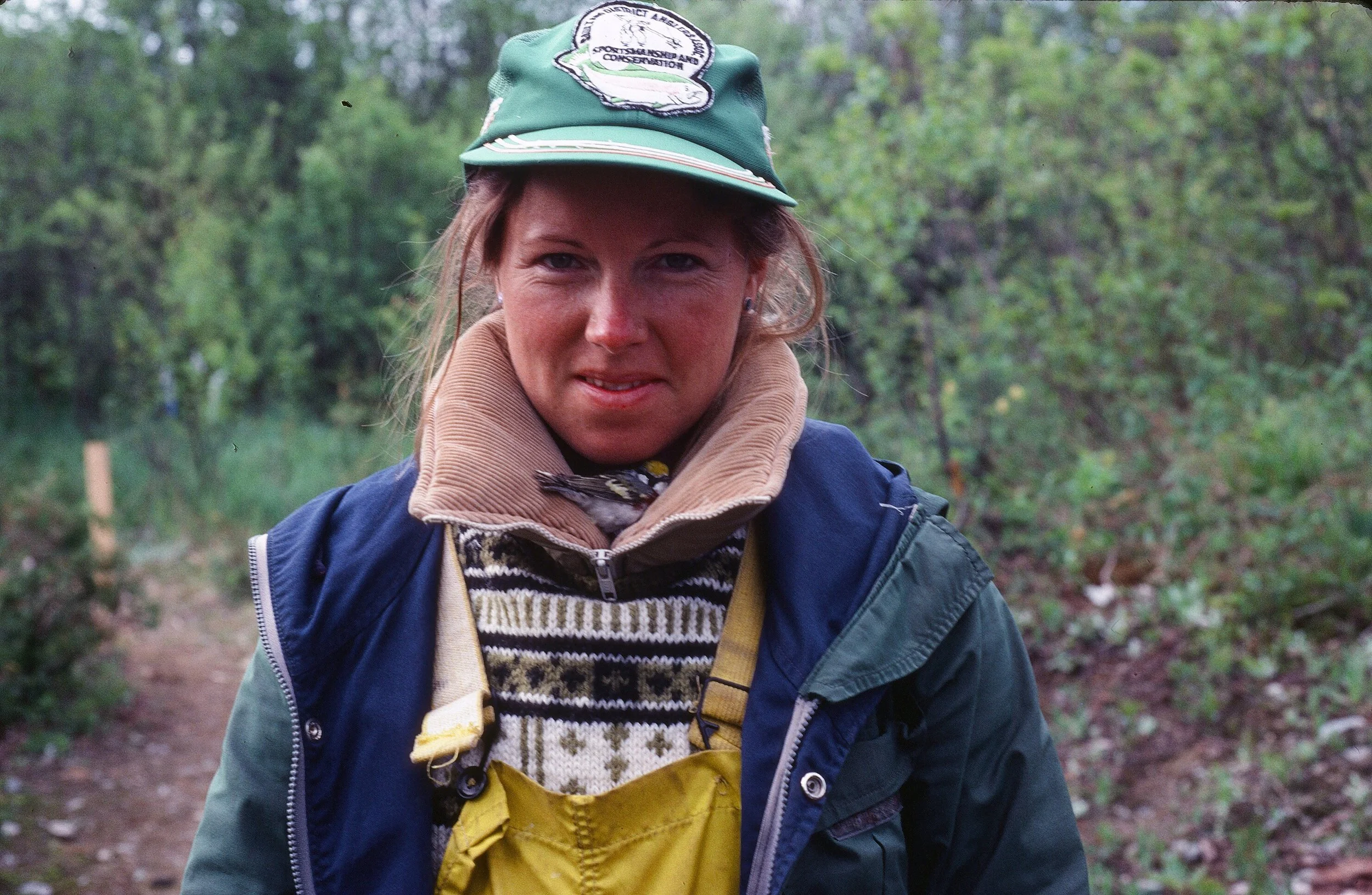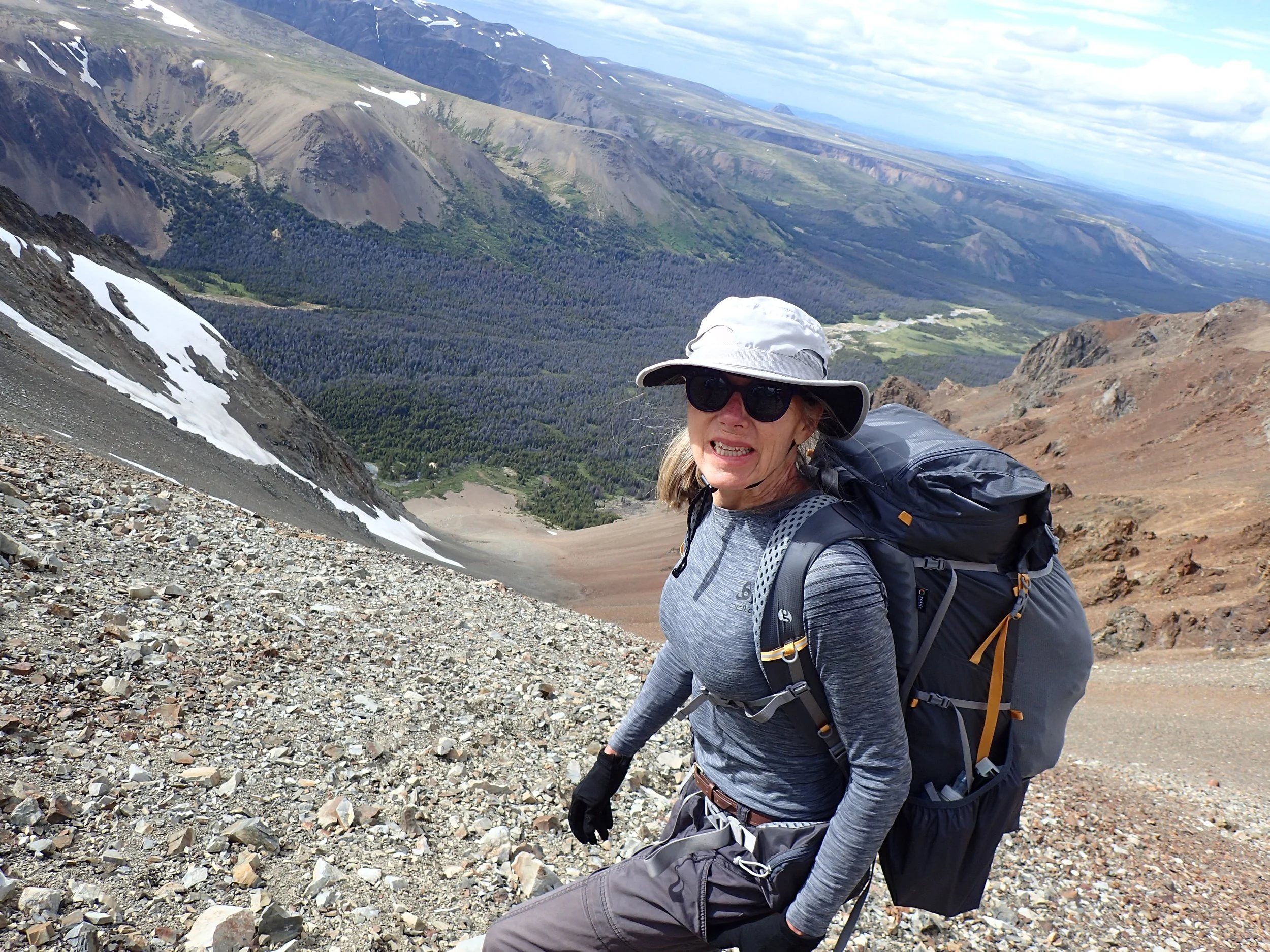Digging Your Heels In
Canadian scientist Rhonda Millikin wouldn’t back down —and changed the way we study birds in the process.
THE NOMINATION
Ann Duffy, an international sustainability consultant who has worked with mega sporting events such as Olympic Games (including Brisbane 2032), PanAm Games and FIFA events, is inspired by the tenacity and courage of her friend and ornithologist Rhonda Millikin.
I was living in Switzerland when Rhonda Millikin first knocked on my door 32 years ago. She was visiting Europe, and my sister had given her my name. We went for a run, had dinner together, and discovered we were both crazy about sports. We’ve been friends ever since. When I moved back to Vancouver in 1994, we started doing long runs together, solving the world’s problems.
Rhonda could talk for hours about her passions: ecology, ornithology, the migration of birds and bats, and cross-country skiing. At that time, she was working for Environment Canada, using radar to study bird and bat movement. She went on to do a PhD and develop technology that completely changed our understanding of bird and bat migration.
She’s tiny, so she can be underestimated. She wasn’t treated well by some men in her career with the government.
She’s tiny, so she can be underestimated. She wasn’t treated well by some men in her career with the government. Even though her PhD research was groundbreaking, her managers at Environment Canada did everything to undermine her. She took the government to court over her treatment. That experience led to a serious depressive episode for Rhonda. But even in those dark times, she found the courage to carry on.
Rhonda’s tenacity is an important part of her courage. It’s both a blessing and a curse. Sometimes, her stubborn streak will kick in and prevent her from looking for a different way. She doesn’t always consider what’s practical. She could have left the government instead of fighting them. It would have made her life easier. But she stuck it out and by the end of her career, she was a much-loved manager who empowered those around her. So that tenacity and courage, which might have looked impractical, paid off for many people.
Rhonda’s tenacity is an important part of her courage.
I’m inspired by Rhonda’s courage, her passion, her deep love of nature, and, of course, her tenacity. When the chips are down, she gets back up and tries again.
RHONDA
My mother found a love letter from another woman in my dad’s laundry when I was 12. Dad was in the military and when he came home from the Mess, Mom said, “I’m done.” They didn’t fight. She just took us out of our Ottawa home and moved us into subsidized housing with no money, just our beds and the clothes in our closet. She trusted she was going to be able to make it work. She showed huge courage.
Rhonda’s Mom with her three children.
L-R: Sandra, Hugh, Rhonda.
We lived in the basement of a model home for a while, which was bleak. We’d have to vacate whenever people wanted to inspect the house. In those days children from broken homes were considered bad news. So I had friends who weren’t allowed to hang around with me because I was going to be a deviant. It was tough but Mom always said, “Let’s have fun”. My brother, sister, and I agree that our resilience comes from those days.
And I always had nature. I’d spend days at the pond collecting frogs and making them houses, silly things like that. So a career in ecology was a given.
In those days if you wanted a career in science, you were told you couldn’t have a family. I chose career. I wanted to make a difference in the world.
I always had nature.
I got my first job with Forestry Canada in 1980, studying the impacts of chemicals being used in the forests in northern Ontario. That turned into 2-years of research as a Master’s supported by Forestry Canada. When my research showed that the chemicals were harmful, my director supported me, and we were able to put a stop to the spraying.
Rhonda, aged 23, in the early days with Forestry Canada. In her collar is a Chestnut-sided warbler which she is warming after catching him in a mistnet and banding.
I applied for a transfer to Environment Canada in British Columbia in 1990, so I could be close to my dad, who was sick. The Department of National Defence wanted to avoid selling some of their land to developers, and I was engaged to show the importance of that land to bird conservation. It was a funny place to work. I had a little trailer on land classified as an ammunition dump. Every once in a while, I’d get a call to say, “Millikin, you’ve got to get out of there. We’re going to start blowing things up.”
The forest canopy on this land was 40 meters high, so the usual bird nets were never going to give us a true understanding of what the birds were doing. I’d read some work on using radar and microphones, called the researchers, borrowed radar from BC Ferries and set myself up to record the bird traffic. Each night I’d wake myself up every 15 minutes to trace the blips on the radar. My research showed that birds wouldn’t be able to migrate successfully without that piece of land. The land wasn’t sold.
It was a great result, but I knew the technology could be better. If I could combine the data from the microphones and radar, I could figure out which specific birds were being affected. There are different conservation strategies for different birds, so I wanted to understand which bird populations were most affected.
Engineering companies weren’t interested in the work; it wasn’t profitable enough. I decided I had to do it myself. I went to the Royal Military College, and luckily, the dean was a birder. So, I was registered for a PhD in Physics in 1999 (even though I hadn’t studied physics since Physics 101).
I explained the importance of this work to my superiors, but they refused to provide funding. When I decided to self-fund, my manager said, “If you leave, you will not have a job to return to.” My director didn’t support me when I asked for help, so I knew I would have to fight at the next level.
Millikin versus Treasury Board of Canada was argued before an actual judge, in the middle of my PhD. I was sick the morning of the trial; I was so scared. Sitting in that room with all these male managers looking at me like I was useless; it was hard. But I kept thinking, “I’m in the right here.” I ended up winning, and when I’d finished my degree, my managers were forced to take me back.
I kept thinking, “I’m in the right here”.
I returned in 2002 with three patents and global recognition for my radar acoustic work. I was convinced that they would come around. But they stripped me of my position and treated me terribly. They couldn’t prevent me from working there, but they could try to make me quit. I remember, if I saw my director walking toward me, I’d tell myself, “Positive energy in, negative energy out.” Then, once I made it to the bathroom, I’d bawl my eyes out.
My housemates came home one day to find me lying in the driveway. I couldn’t move. My doctor said, “You can’t go back. It’s toxic.” I was put on medical leave and had to start anti-depressants just to get myself out of bed. I kept thinking, “I’ve given up my life for my career, now what?”
My housemates came. home one day to find me lying in the driveway. I couldn’t move.
In the end, I took a full year off. I moved to Ottawa to be with Peter, my now ex-husband. But it was actually using my new technology and incorporating EchoTrack, that got me back on my feet. I got contracts in South Africa, the US and Canada, mapping the flight paths of birds and bats to identify where to position wind turbines so they wouldn’t kill raptors (as they had in California) and migratory animals, whose habits we were just learning about. I did remarkably well, and I suppose I could have just kept doing that.
But I can be pig-headed. There was so much more work to be done with my technology and Environment Canada was the best place to do it. Plus, I didn’t want to be forced to lose my pension.
I hired people to work on EchoTrack projects and sidestepped my toxic managers by taking a short-term assignment with Environment Canada in Ottawa in 2005. By the time I returned to Vancouver, the people had changed. I was able to do other research, worked with some wonderful people and when I made it into management myself, I resolved to reverse the negative environment. When I retired in 2017 many of my staff cried. I ended up demonstrating how to treat people properly, and for that reason, I’m glad I chose to go back.
I’m not sure I can separate courage from faith in myself.
It did take courage to come through everything: the court case, the terrible treatment, the depression. I stopped the medication quickly because I didn’t want to become dependent. I told myself I had to pull up my socks and get through it, knowing there would be some opportunity on the other side. I’m not sure I can separate courage from faith in myself. I had to trust I could make it work, just like my mother had done all those years before.
Rhonda’s Research in Retirement
Rhonda “retired” in 2017, moving to Whistler BC, where she studied landscape horticulture and soil biology. She then did research to show that by bringing back native plants, vineyards improve soil health, reducing the need for chemicals, and now works with vintners in the Okanogan Valley. She says her work with vineyards is not only seeing native birds and animals return to the region, but the flavour of the wines has improved. There’s a win-win!
Trekking in the Chilcotin Ranges, British Columbia not long after her retirement.




